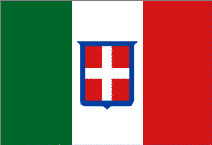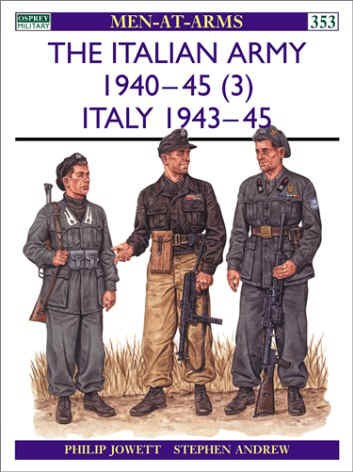 |
|
|||
|
|
||||
|
In WW1 the Italians were brave and reliable Allies. Not so in WW2. |
 |
Italian Army in WW2 The Italian Army in 1940 consisted ( in theory) of 73 divisions, but could mobilize only 42; and it did so only by reducing the number of units within each. |
||
Some of the divisions had been active in peacetime, including a number found in Italy's African possessions and formed of local residents both settler and native, but most were reserve formations, activated by inducting reservists.
The infantry of the armoured, light, and motorized divisions was provided by the Bersglieri (light infantry) regiments. Formations above divisions were corps and army. A division contained two infantry regiments of three battalions each, an artillery regiment of nine batteries of four field guns each, an anti-aircraft and an anti-tank battery and an engineer company; many divisions also incorporated a Blackshirt legion of two battalions, a Bersglieri regiment of two battalions and a small self-propelled artillery regiment. The infantry divisions had little or no mechanical transport. Italian equipment was old and poor, and in many cases lacking. Standard infantry weapons were the Mannlicher 6.5mm rifle, Hotchkiss 6.5 light machine gun and Schwarzlose 7.92 machine gun. Italian artillery was mostly of World War I design and the armoured vehicles were all notoriously under-armoured, under-powered, and under-gunned. The L/3, a three-ton carrier, served as the 'tank' in many armoured units until well on in the war. The M/ll, a true tank, had only a hull-mounted 37mm gun and the M/13, a useful vehicle with a 47mm turret gun, joined the Army only in 1941 and even then in small numbers. Some Italian formations were excellent, particularly the alpine and Bersglieri regiments, but the bulk of the infantry, who were badly paid, badly fed, and poorly cared for, had no heart in the war, which they did not see as serving the country's interests. Those sent to Russia in 1942 were quite un-acclimatized. Equally, the Italian High Command (Commando Supremo) contained numbers of officers whose enthusiasm for Mussolini and Fascism was less than absolute. The guiding principle of the officer corps was loyalty to the Royal House of Savoy, which Mussolini had eclipsed.
|
|||

